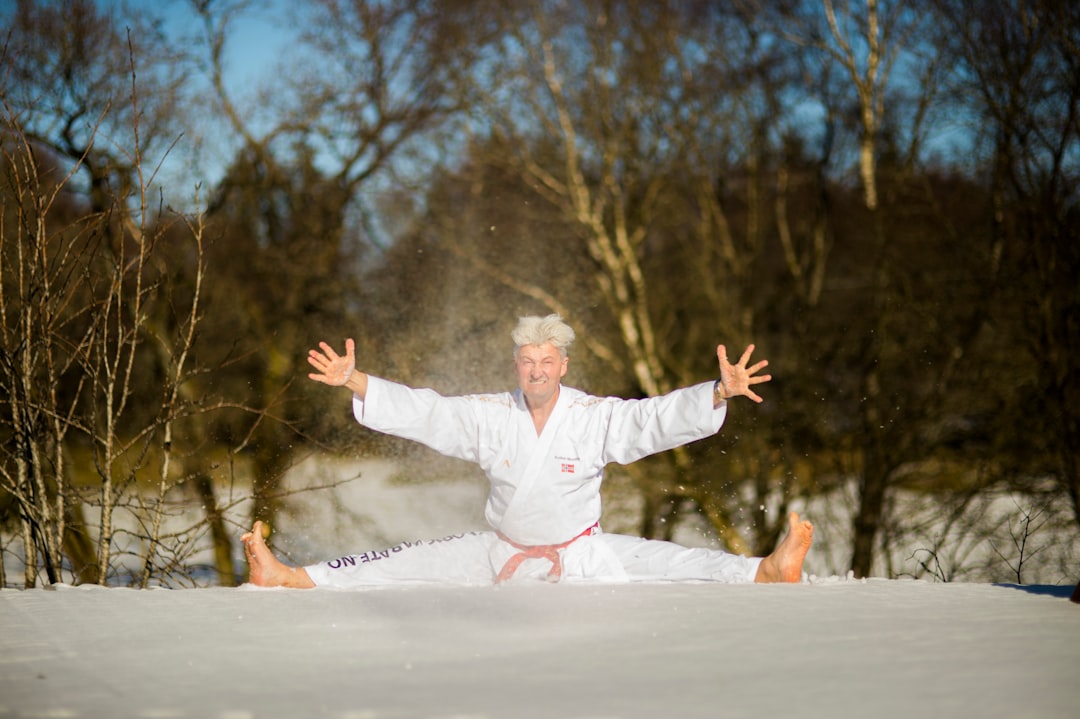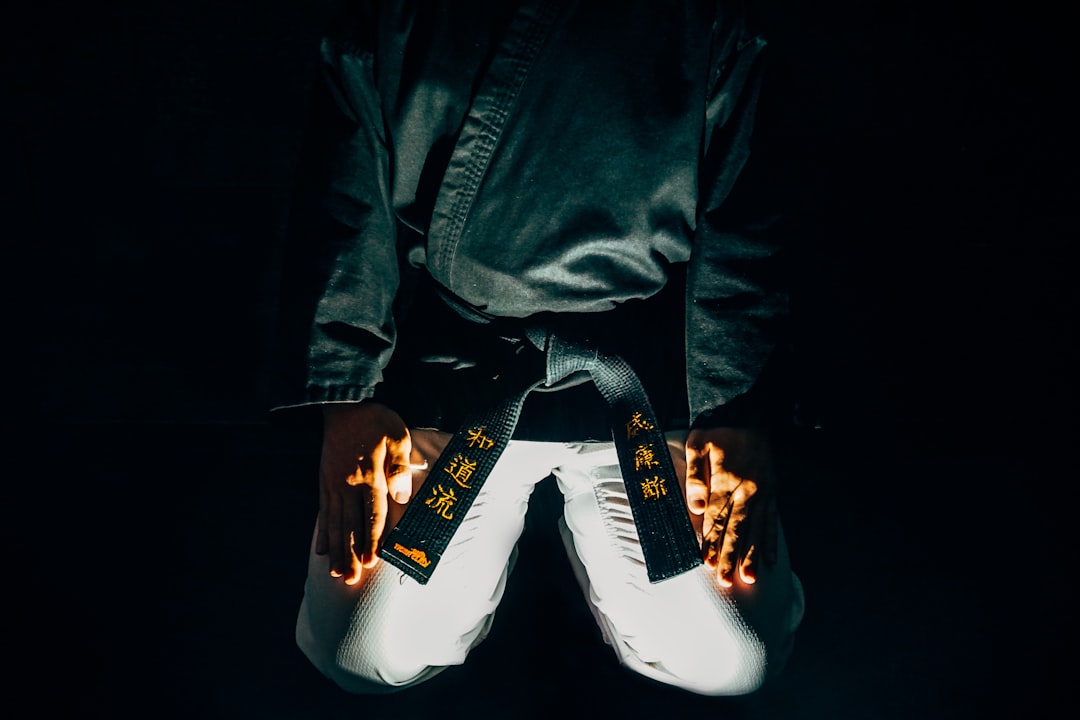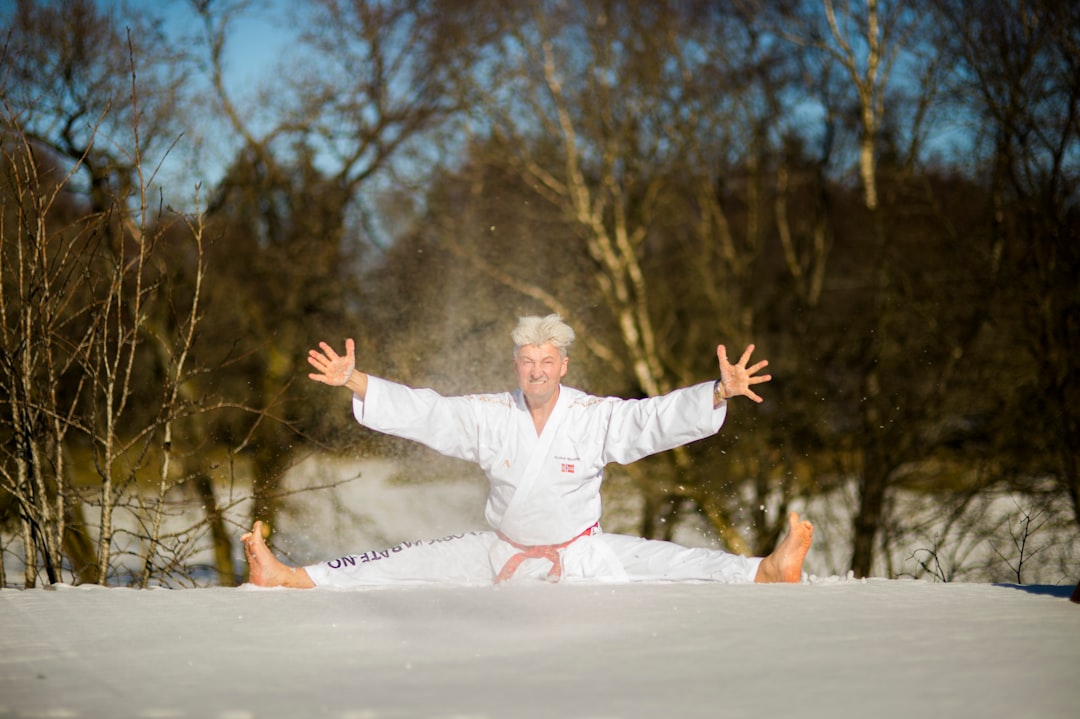Training karate at home effectively requires the traditional keikogi or Gi, a white cotton uniform that supports the full range of motion needed for the discipline's techniques and enhances instructors' ability to evaluate form. High-intensity training demands a well-fitted Gi made from fabric appropriate for your local climate, ensuring both comfort and durability. Safety considerations might dictate the use of soft-soled slippers or protective gear like a mouthguard and padding for sensitive areas when practicing without guidance. While casual attire may seem adequate, it can impede performance and diminish the mental engagement karate demands. A Gi is not just a symbol of readiness to learn but also practical, providing a comprehensive training experience that supports proper form, full range of motion, and fosters a respectful mindset essential for mastering karate at home.
Exploring the specifics of martial arts apparel, this article delves into the terminology and importance of proper attire for practicing karate. Whether training at home or with a sensei, understanding what constitutes traditional and functional karate garb is crucial. From the essentials of training karate at home to dressing for discipline, learn how your choice of clothes can enhance your technique and respect for the art. Key terms like “train karate home” will guide you through the best practices for donning attire that supports both your form and focus in the dojo or your personal space.
- Understanding Karate Attire: The Essentials of Training Karate at Home
- Dressing for Discipline: What to Wear When Practicing Karate Alone or with a Sensei
Understanding Karate Attire: The Essentials of Training Karate at Home

When training karate at home, it’s crucial to wear appropriate attire that allows for full range of motion and comfort during exercises. The garments used in karate, commonly known as Gi, are designed to provide durability and flexibility essential for the practice’s various techniques and movements. A traditional Gi typically consists of a jacket, trousers, and belt, with the jacket being relatively loose-fitting and the trousers straight-legged. These components are usually made from heavy cotton or a cotton blend, which offers both comfort and longevity. Do they need to be specifically designed for high-intensity activities? Yes, training karate is physically demanding, and a Gi crafted for such intensity ensures the wearer’s movements aren’t hindered, facilitating effective practice sessions at home. Are there any specific considerations when selecting a Gi for home training? When choosing a Gi for home karate practice, it’s advisable to opt for one that fits well and is made from a fabric suitable for your local climate conditions. This ensures optimal comfort and performance throughout your training regimen. Additionally, ensure the Gi is the correct size; it should not be too tight or too loose, as both can restrict movement and hinder your practice. What about footwear? Generally, karate is practiced barefoot to maintain a good grip on the floor and allow for natural foot movements during techniques. However, if you’re training on surfaces that might cause discomfort or injury, consider using soft soled slippers or training mats to protect your feet. Are there any additional items that are beneficial for home karate practice? Yes, additional items such as a well-fitted mouthguard and protective gear for the groin and shin areas can prevent injuries during practice, especially if you’re practicing high-impact techniques like kicks and blocks. Proper attire, along with the right equipment, will enhance your home training experience and help maintain the integrity of karate movements.
Dressing for Discipline: What to Wear When Practicing Karate Alone or with a Sensei

When training karate at home or under the watchful eye of a Sensei, understanding what to wear is crucial for both comfort and respect for the discipline. Karate clothes, known as ‘Keikogi’ or ‘Gi’, are the traditional garments worn by practitioners during practice. This white cotton uniform not only signifies the martial artist’s readiness to learn but also facilitates movement and enables the instructor to assess form and technique effectively. Are ‘Keikogi’ essential for training karate at home? Absolutely, they are designed specifically for the movements involved in karate, providing both durability and flexibility. Additionally, wearing a Gi helps maintain a mindset of discipline and focus, which is essential when practicing alone or with a Sensei. It is also practical to wear a belt, or ‘Obi’, which holds the Gi closed and signifies the practitioner’s rank within the discipline. Can you train karate effectively in any casual clothing at home? While it’s possible to practice karate in everyday attire, doing so may not be as conducive to mastering the art as wearing traditional karate clothes like a Gi. The loose fit and structured design of a Gi allow for a full range of motion, which is necessary for executing karate moves correctly. It also helps in maintaining a sense of reverence for the practice, which is beneficial for mental discipline.
In wrapping up our exploration of karate’s rich tradition and the importance of proper attire in maintaining discipline during practice, it’s clear that the term for karate clothes encompasses more than just a uniform—it represents the commitment to the martial art. Whether training karate at home or alongside a Sensei, the essential garments serve as a tangible connection to the sport’s origins and its principles. For those dedicated to honing their skills, understanding what constitutes appropriate karate attire is key to respecting the practice and enhancing one’s own development in this challenging and rewarding discipline.
